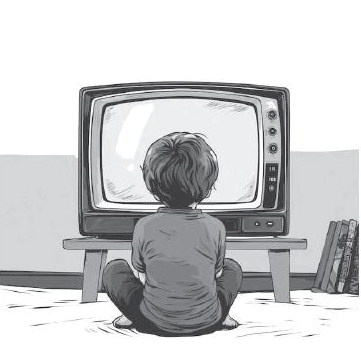Cartoon Land


Grow ing up in the 1960s and 1970s, I witnessed the heyday of television — an era of unmatched pop-cultural panache on the small screen, and a time that birthed a generation of cartoon watchers like me. Many a Southern childhood was cradled in the glow of a cartoon land that taught us about the past, dared us to dream of the future, stretched the rubber band of our imagination, and, every now and then, emitted valuable life lessons.
Let’s start with the stone age spectacle, “The Flintstones.” Bedrock wasn’t just a town in a prehistoric cartoon sitcom; it was a slice of Americana chiseled into rock. From Fred and Wilma to Barney and Betty, they were the neighbors we all wished we had, especially if your neighbors could lend you a dinosaur-powered lawn mower or a car fueled by foot power. They had jobs (Slate Rock and Gravel Company), children (Pebbles and Bamm-Bamm), and pets (Dino and Hoppy). Everything seemed so normal about their lives other than they lived in a prehistoric age. Their world was a well-quarried mine for understanding human nature — teaching us about the importance of friendship, the struggles of everyday life, and that pterodactyls make terrible record players. And in every episode, Fred mouthed his iconic “Yabbadabba- doo!” And who among us of a certain age didn’t love watching “The Jetsons?” Orbiting in stark contrast to the Flintstones, George, Jane, Judy, and Elroy gave us a conveyor belt ride into a utopian future with robot maids, flying cars, video chats, and food-a-rac-a-cycles, that served up instant meals. Like the Flintstones, the Jetsons were weirdly normal to us, with jobs (Spacely’s Space Sprockets) and a pet we all adored — Astro, who could talk, beginning every word with an “R.” They, too, were a family unit — no matter the era or the galaxy. The Jetsons were the embodiment of future hopefulness, teaching us that progress and love could indeed coexist harmoniously.
Saturday mornings found my brother, sister, and me just a foot from the television screen waiting for “Scooby-Doo” to come on. We loved the young squad of investigators and their cool, groovy van they called “The Mystery Machine.” As a child raised on Southern ghost stories, Scooby and the gang made sleuthing for spooks as addictive as eating funnel cakes at a county fair. They proved time and again that most monsters were just bad men in masks, and a little courage goes a long way. And we all longed for a talking dog like Scooby Doo, who was the lovable epitome of canine companionship.
But Saturday mornings were ruled by the one-and-only Bugs Bunny and his entourage of unforgettable characters — Elmer Fudd, Daffy Duck, the Road Runner (beep beep), and Wile E. Coyote, who must continued from page
have fallen over a cliff over a thousand times. Bugs was a carrot-munching wisecracker with a northern accent that greeted most characters with the well-known catchphrase, “What’s up doc?” He was smart and funny, and we all enjoyed his antics, and his show taught all of us children of the sixties and seventies opera, without even knowing it.
Later in the morning on Saturdays, “Fat Albert and the Cosby Kids” came on — providing lessons for every moral quandary a youngster like me could face in life, though the characters themselves were young black males. The 30-minute shows (with lots of cereal commercials wedged between segments) were classes in ethics masked as entertainment. Based on comedian Bill Cosby’s childhood experiences, Fat Albert’s adventures in Philadelphia brought diversity to our Southern screens, and in doing so, Albert and his friends made our world a little smaller and our hearts a little more compassionate.
These animated shows were more than just cartoons — they were fertile grounds for my imagination to grow and flourish. Today, they are the shared experiences of my generation, as we recall the communal laughter of young friends and family members sprawled out across living room floors from Dublin to Dahlonega and from Valdosta to Vidalia.
Back then, I was warned that watching cartoons on the “boob tube” would rot my brain, but look at me now. My brain is intact. Instead, cartoons taught me that life — past or future — dances to the same human beat. Whether etched in stone, soaring through space, solving mysteries in a haunted mansion, growing up in the inner city, or outsmarting scoundrels like Elmer Fudd, cartoon characters will always fill my memory with happiness and the laughter of a bygone era.








NITTY GRITTY
Posted on